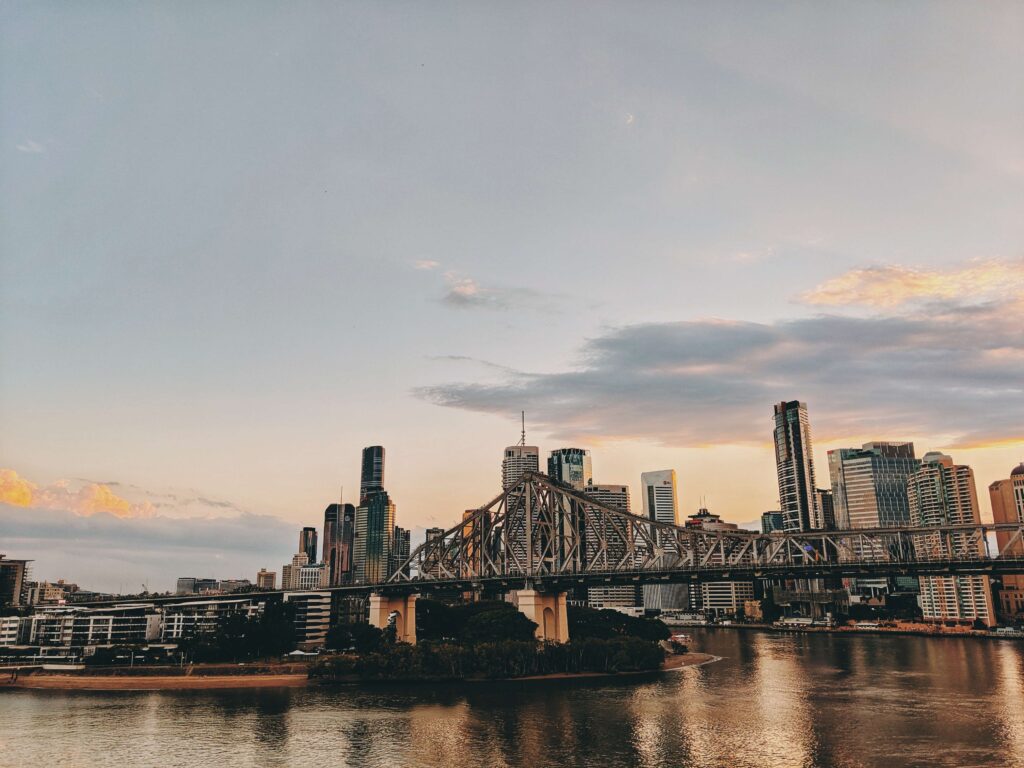Brisbane Weather by Month

By late March, Brisbane‘s heat and humidity has started to ease off gradually, making this an excellent time to visit its Botanic Gardens, take a river cruise or visit South Bank Parklands – with less crowds and lower hotel rates, it offers great value.
Autumn (March to May) is another popular time of year to visit, as temperatures tend to be more comfortable with less precipitation; however, bringing a light jacket might still be prudent.
Table of Contents
January
January is Brisbane’s peak season due to school summer holidays; expect hot temperatures and packed beaches. Furthermore, January marks humpback whale migration season making this month an excellent opportunity for whale watching tours.
As autumn nears, temperatures begin to cool off considerably. To stay comfortable on evenings out at restaurants and rooftop bars, be sure to pack a light jacket.
February
February is an ideal month to explore Brisbane’s lush Botanic Gardens or enjoy a stroll along South Bank Parklands.
As one of the hottest months in NYC, summer brings uncomfortably sticky temperatures and oppressive humidity. But there are ways to find relief, like splashing around in Streets Beach in the heart of town.
March
Summer in Hawaii can be extremely hot and humid, yet sea breezes help temper its intensity. This season is ideal for school summer vacations as well as viewing the annual Humpback Whale Migration from June – October.
Temperatures begin to cool off considerably in March, as humidity reduces. Pack a light jacket for evening walks or river cruises during this month – it is also prime time for seeing spectacular blooming jacaranda trees!
April
At the start of spring (September-November), temperatures and humidity begin to moderate. Humidity still remains high; however, and spectacular thunderstorms often form.
Still, temperatures remain warm enough for swimming; simply be sure to pack a long-sleeve shirt for evening swim sessions.
May
May brings relief from Brisbane’s humidity as the season changes. Precipitation drops dramatically – just 37 mm (1.5 in). This drops significantly due to dry weather arriving.
At this time of year, jacarandas blooming add a beautiful spectacle to city streets and parks, filling them with their vibrant lilac hues and filling the festival calendar with smaller crowds than during peak summer or spring seasons.
June
June marks the end of summer’s scorching heat and brings with it cooling temperatures that still make swimming enjoyable, reduced rainfall, and lighter winds.
It is also when the Royal Queensland Show, better known as Ekka to locals, takes place each year. Enjoy agricultural exhibits, carnival rides, live entertainment and the ever-popular show bags! Additionally, deadly box jellyfish season has ended during this month.
July
As summer winds down and fall begins, temperatures begin to dip. To be safe, bring lightweight rain gear and appropriate sun protection.
Humidity levels tend to rise during this season and afternoon thunderstorms can become common. Still, it’s an idyllic season for visiting Brisbane with gorgeous lilac jacaranda trees in full bloom across the city and festivals being hosted at every turn – plus its beaches still being relatively warm! A fantastic time for visiting this wonderful place.
August
August is a transitional month in Brisbane, signaling the end of summer while offering milder temperatures. Average maximum temperatures rise slightly compared with July while humidity decreases.
As UV Index levels remain high – currently at an exposure level of 8 – it’s crucial that outdoor activities take precaution against sun damage by wearing appropriate sun protection and layering up for evening. A light jacket would also come in handy.
September
As temperatures decline and humidity subsides, autumn is an ideal time to visit Brisbane’s lush botanical gardens and cultural attractions.
Below are tables providing September weather data in Brisbane since 2010. Clicking any month will display its average temperature, hot days and rainfall figures – it is wise to wear sunscreen and bring along a hat when exploring outdoors.
October
October marks the beginning of wet season and sunny weather becomes less reliable. Expect more tropical-inspired conditions, with temperatures ranging between 73-86 degF and humidity levels reaching 72%.
T-shirts, thongs and shorts are appropriate attire for casual cafes and pubs; however, bring along a light jacket for cold evenings out on the town. Also prepare yourself for rainfall – the average total rainfall in 14 days averages 142mm!


